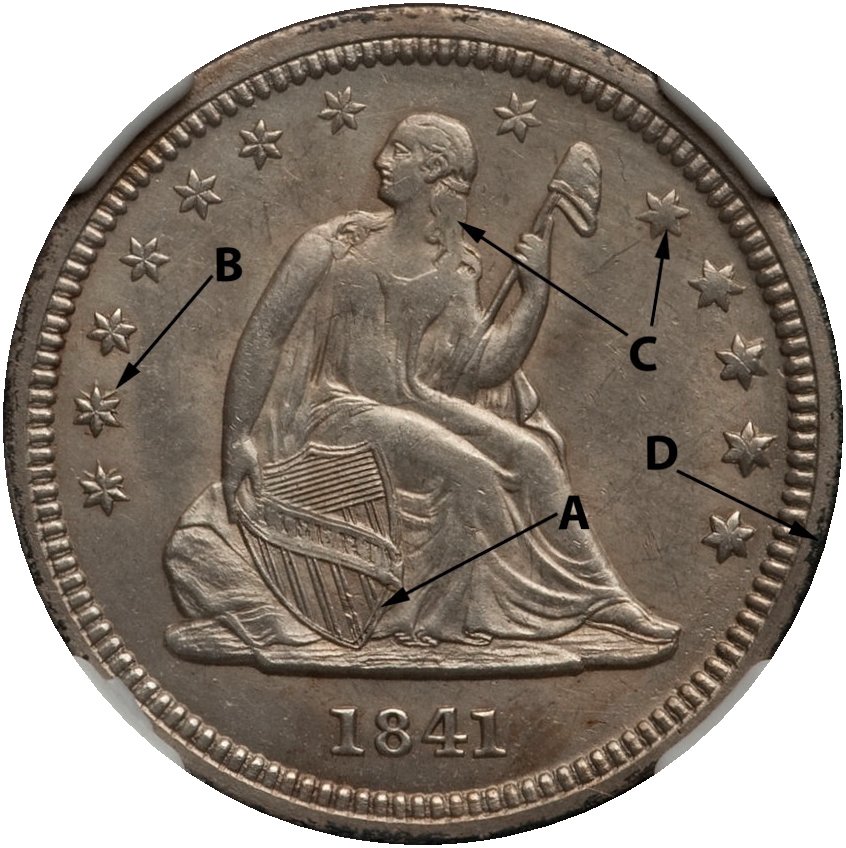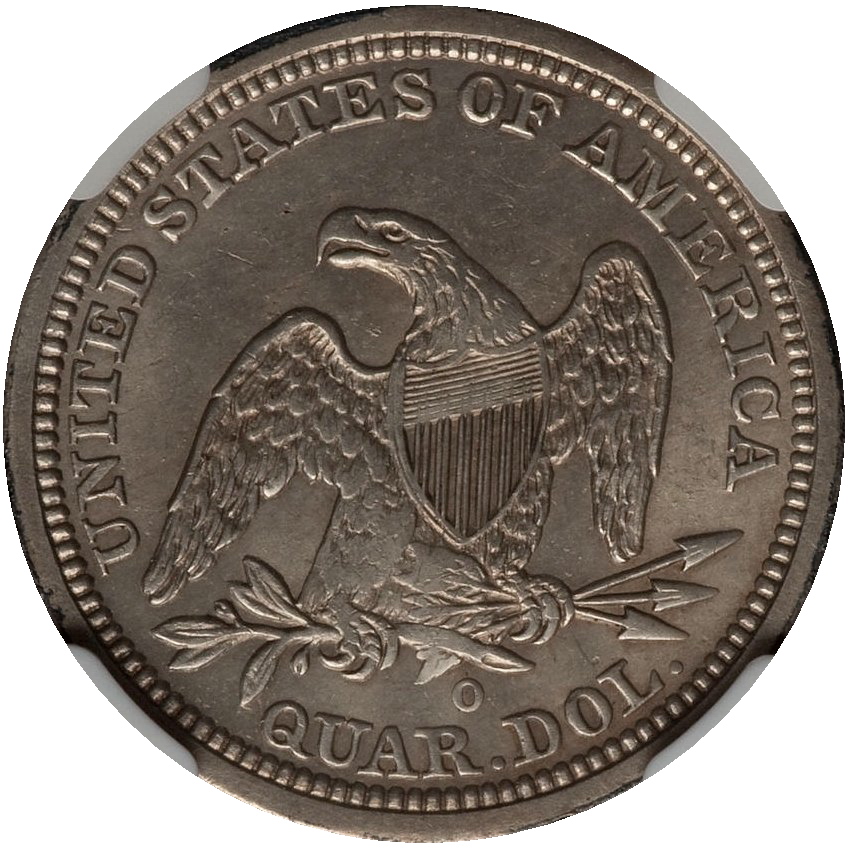

|
|
|
1841-O Liberty Seated Quarter Dollar - Doubled Die Obverse
by Greg Johnson
Construction of the Meridian Hotel in New Orleans
came to an abrupt halt on the afternoon of October 29, 1982 as the crew excavating
for the foundation unearthed the remains of three cedar boxes filled with coins.
Those present described a surreal scene as onlookers, some dressed in suits
and ties, and construction workers cast about on their hands and knees, some
even venturing into mud up to their waists, in search of the buried treasure.
The majority of those at the site left with only a few coins, resulting in a
wide dispersal that prevented any detailed accounting of the contents of the
hoard. New Orleans coin dealer James H. Cohen provided appraisals for many of
the coins and made some public observations in the November 24, 1982 edition
of Coin World. A couple of interesting things were learned from his examination
of the coins. First, the “New Orleans Hoard”, as it has come to
be known, consisted entirely of coins dated 1842 and earlier – implying
that it was most likely buried during 1842 or 1843. Second, the large majority
of the coins were Mexican Republic and Spanish Colonial silver pieces, corroborating
reports that most commerce in the United States at the time was conducted using
these foreign silver coins as the medium of exchange. A footnote to this fascinating
story that has been no doubt lost on most, even within numismatics, is that
October 29, 1982 marks the last day that the 1841-O quarter had any legitimate
claim to being a rare coin in any but the highest of grades.
Despite claims to the contrary by some EBay sellers, the 1841-O Doubled Die
Obverse quarter is not only a relatively common date and mintmark, it is also
a relatively common variety. Though one might correctly call it “somewhat
scarce”, an estimated 200+ examples of this single die marriage were found
as part of the New Orleans Hoard. Recent auction records, EBay sales and monitoring
of dealer inventories indicates that the Doubled Die Obverse variety accounts
for more than half of all 1841-O quarters on the market. Presumably due to the
fact that the hoard was buried so soon after the 1841-O quarters were minted,
and within blocks of the mint itself, most of the hoard coins were in high grades.
Thus the likelihood that an 1841-O quarter will be of the Doubled Die Reverse
variety increases with grade; notably more than half of the uncirculated examples
known are the Doubled Die Obverse die marriage.
The whole story, as is frequently the case in numismatics, is somewhat more
complicated. The more than 200 1841-O Doubled Die Obverse quarters recovered
as part of the New Orleans Hoard were not left unscathed by their time in the
ground. Some uncleaned examples from the hoard appear to be encrusted with a
substance resembling tar. Others, though “conserved”, show either
after effects of cleaning, or micro-porosity from having been in water for a
long period of time. Even those that survive in good enough condition to merit
certification often bear telltale signs of their “checkered” past.
Encapsulated New Orleans Hoard coins can sometimes have a unique olive green
toning or dark black reading that lies in harsh contrast to the obverse and
reverse surfaces. Considering all of these factors it is fair to say that a
nice, original 1841-O DDO remains a very scarce to rare and highly desirable
numismatic item.
There is at least one other factor for those collecting early seated quarters
to consider. The 1841-O DDO quarter is found with all manner of strike; however,
most examples vary between moderately and very weakly struck. Figure 1 shows
the obverse of an 1841-O DDO quarter. The pictured coin is better-than-average
for New Orleans Hoard coins and is certified mint state. Note the doubled obverse
shield (A), the doubling of stars one and two (B), the weak strike on Miss Liberty’s
hair and the right side stars (C), and the dark black reeding and edge. Figure
2 shows the reverse of the same coin. Strike weakness is evident on the eagles
left (facing) leg and arrow feathers and the dark black rims are again apparent.


In summary, the 1841-O DDO quarter is common by
seated quarter standards. Unimpaired from being in the ground and/or cleaning
it is very scarce. Fully struck, original, uncleaned, and unimpaired examples
of the 1841-O DDO quarter are quite rare and still represent a noteworthy prize
for the collector.
Images courtesy of Heritage Archives.